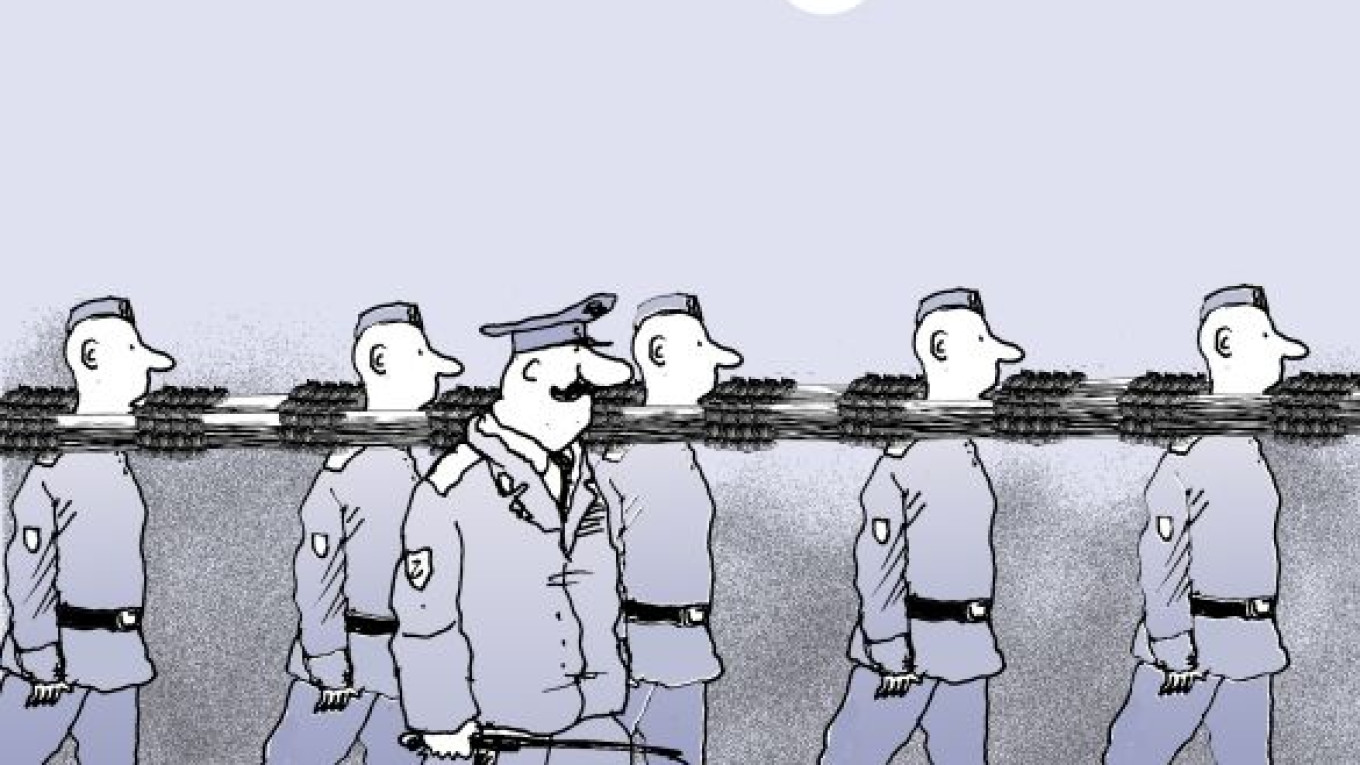Some of the most interesting artifacts of the Soviet Union in Russia are the holidays that continue to be celebrated, almost two decades after the fall of communism. On Feb. 23, Russians celebrated the Defender of the Fatherland Day, a rough equivalent of Father’s Day but with a militaristic flavor. On this day, daughters, wives and girlfriends give presents to Russian men and lavish them with attention.
During Soviet times, Feb. 23 was called the Day of the Soviet Army and Navy and celebrated the creation of the Red Army. (The holiday received its current name in 2006.) Unfortunately, Feb. 23 is not the only remaining relic of the Red Army. Another Soviet military legacy is the system of obligatory conscription. While all other large European countries abolished military conscription in recent decades, Russia continues with a system in which all physically fit male citizens aged 18 to 27 must serve for 12 months. Exemptions are based on medical conditions and are given to university students and employees of certain organizations. About 500,000 young men are conscripted every year.
The system is unfair, inefficient and unpopular. According to the polling firm Public Opinion Foundation, 51 percent of Russians support abolishing conscription, and 67 percent are against extending the age of eligibility for the draft. The Russian military estimates the total number of draft dodgers to be close to 200,000. According to the Moscow Bureau for Human Rights, the current rate for bribes to avoid conscription is as high as $5,000, while a typical lieutenant’s monthly salary is about $500.
A recent study by Michael Lokshin and Ruslan Yemtsov from the World Bank, “Who Bears the Cost of the Russian Military Draft,” indicates that the burden of conscription falls disproportionately on poor, uneducated and rural households. The probability of being drafted is significantly lower for residents of cities with populations of more than 100,000 people.
A young man from Moscow or St. Petersburg is six times less likely to be drafted than a young man from the much poorer rural areas. Among the richest households, the probability of being drafted is only 3 percent; among the poorest, it is 20 percent.
Moreover, having a son in the military is a significant blow to a family’s income — about 15 percent, according to Lokshin and Yemtsov. Yet even this estimate probably understates the true costs since it does not take into account the decrease in lifetime wages from delayed investment in human capital and shorter work experience. Estimates from other countries indicate that these additional costs may total 5 percent of lifetime wages. In other words, conscription operates as a large in-kind tax on the poorest households, thereby sustaining and increasing Russia’s already high inequality.
Obligatory military service is inefficient because “free” conscript labor is much cheaper for the military than hiring civilians as, for example, cooks and cleaning personnel. Moreover, the military has no incentive to value conscripts’ lives and well-being. According to the Public Opinion Foundation, 79 percent of Russians perceive serious hazing and abuse of draftees as being widespread. Five of six respondents who served in the military since the 1990s were subject to abuse as soldiers. Since 2005, according to official statistics, 2,051 servicemen have committed suicide.
The current system’s defenders argue that Russia cannot afford an all-volunteer army. But this is not true.
Suppose that draftees are paid a salary that is sufficient to make military service attractive for young men. A back-of-the-envelope calculation suggests that paying 500,000 soldiers the current average Russian monthly wage of $700 would cost about $5.6 billion a year, including all taxes and pension contributions. This estimate is an upper bound. Once soldiers are no longer free, generals would most likely use them more effectively and hire fewer of them. Also, given that 18-year-olds are less skilled than average Russian workers, the military would attract better-trained and more productive soldiers, resulting in further savings.
Even the full $5.6 billion represents only 0.4 percent of the country’s gross domestic product and one-sixth of the annual defense budget, at a time when Russia is adopting an unprecedentedly ambitious arms program costing $700 billion over 10 years. By spending just 8 percent of this amount, the Russian army could match its expensive new weapons with soldiers who are able and willing to handle them well. This would make Feb. 23 a holiday truly worth celebrating.
Sergei Guriev is rector of the New Economic School in Moscow. Aleh Tsyvinski is professor of economics at Yale University. © Project Syndicate
A Message from The Moscow Times:
Dear readers,
We are facing unprecedented challenges. Russia's Prosecutor General's Office has designated The Moscow Times as an "undesirable" organization, criminalizing our work and putting our staff at risk of prosecution. This follows our earlier unjust labeling as a "foreign agent."
These actions are direct attempts to silence independent journalism in Russia. The authorities claim our work "discredits the decisions of the Russian leadership." We see things differently: we strive to provide accurate, unbiased reporting on Russia.
We, the journalists of The Moscow Times, refuse to be silenced. But to continue our work, we need your help.
Your support, no matter how small, makes a world of difference. If you can, please support us monthly starting from just $2. It's quick to set up, and every contribution makes a significant impact.
By supporting The Moscow Times, you're defending open, independent journalism in the face of repression. Thank you for standing with us.
Remind me later.


